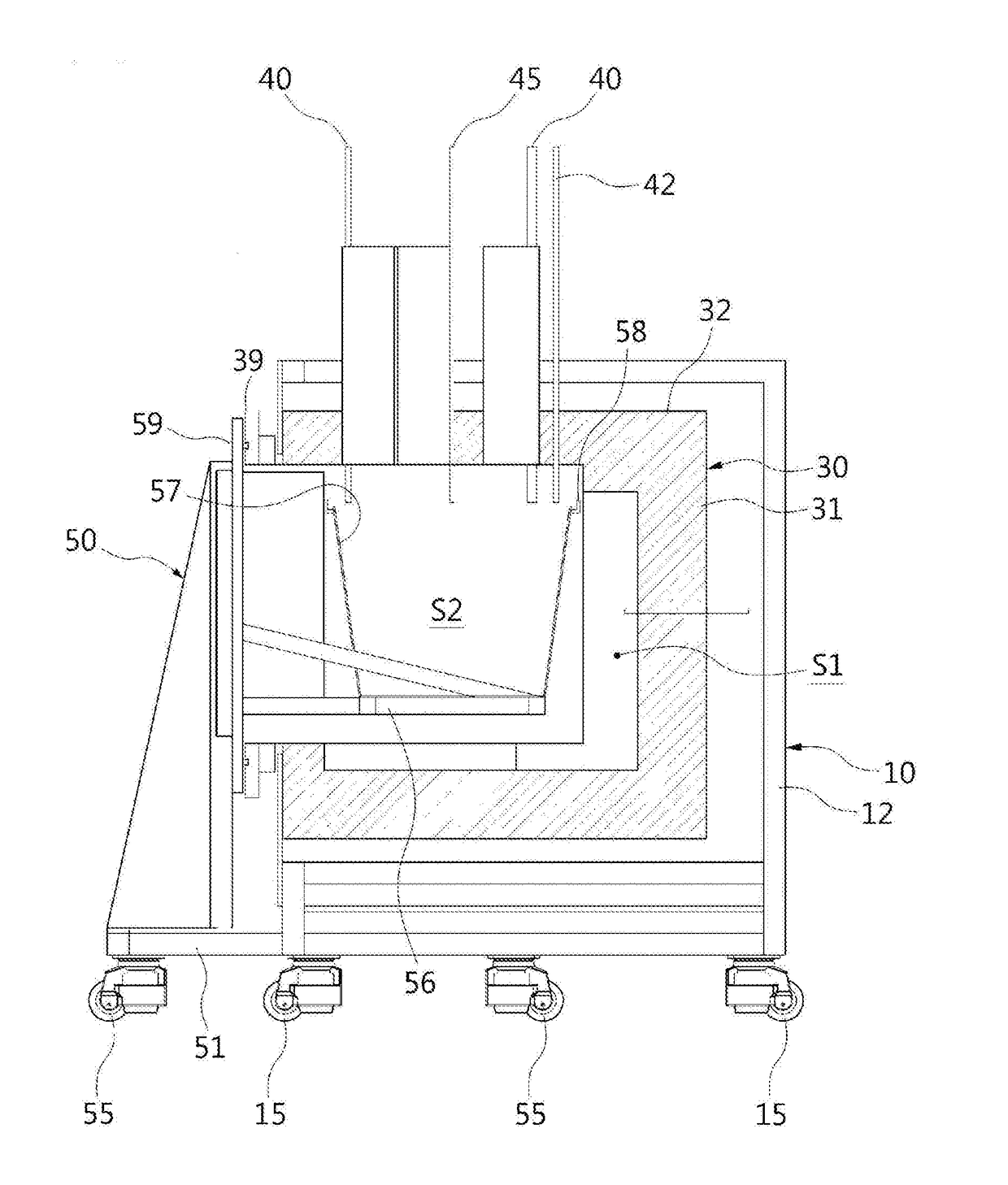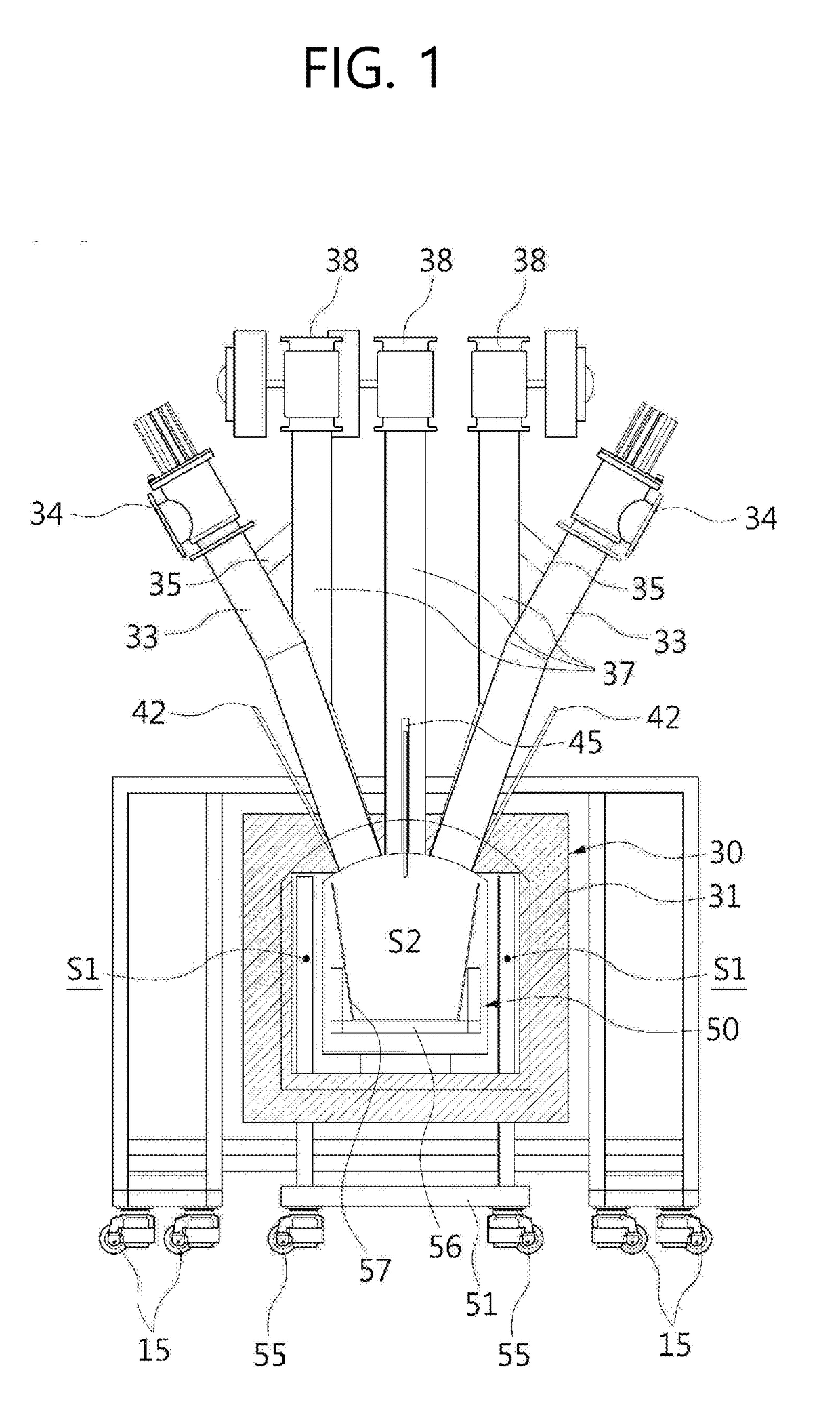Waste battery treatment apparatus using continuous heat treatment, and method for recovering valuable metals from lithium-based battery using same
a waste battery and treatment apparatus technology, applied in the direction of waste accumulator reclaiming, secondary cell servicing/maintenance, electrochemical generators, etc., can solve the problems of reducing stability, difficult to mass-treat waste batteries, and a great burden on the environment, so as to achieve the effect of obtaining more valuable metals from waste batteries more quickly, improving work stability, and enhancing durability of treatment apparatus
- Summary
- Abstract
- Description
- Claims
- Application Information
AI Technical Summary
Benefits of technology
Problems solved by technology
Method used
Image
Examples
Embodiment Construction
[0037]Hereinafter, some embodiments of the present invention will be described in detail through exemplary drawings. When reference numerals refer to components of each drawing, it is to be noted that although the same components are illustrated in different drawings, the same components are denoted by the same reference numerals as possible. Further, in describing the embodiments of the present invention, a detailed explanation of known related configurations and functions may be omitted to avoid interruption of understanding of the embodiments of the present invention.
[0038]In describing the components of the embodiments of the present invention, terms including first, second, A, B, (a), (b), and the like may be used. These terms are just intended to distinguish the components from other components, and the terms do not limit the nature, sequence, or order of the components. When it is disclosed that any component is “connected”, “coupled”, or “linked” to other components, it shou...
PUM
 Login to View More
Login to View More Abstract
Description
Claims
Application Information
 Login to View More
Login to View More - R&D
- Intellectual Property
- Life Sciences
- Materials
- Tech Scout
- Unparalleled Data Quality
- Higher Quality Content
- 60% Fewer Hallucinations
Browse by: Latest US Patents, China's latest patents, Technical Efficacy Thesaurus, Application Domain, Technology Topic, Popular Technical Reports.
© 2025 PatSnap. All rights reserved.Legal|Privacy policy|Modern Slavery Act Transparency Statement|Sitemap|About US| Contact US: help@patsnap.com



